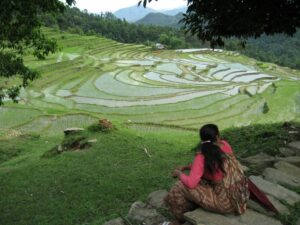The global financial crisis may have slowed the consumption of various commodities, but Asian demand for grains (as food and feed) remains strong. The first World Grains Trade Summit held on 17 to 18 February 2009, organized by the Centre for Management Technology in Singapore, reported that demand for 2009 will largely come from Asia.
As the world continues to recover from the effects of the 2008 crisis, the Summit expressed concerns about the current grain market riddled with risks and slowed by the world economic downturn. The participants hoped for the market to be less volatile, but the Summit reports indicated that this year’s market will be affected by policies, climate changes, and other factors that may disrupt supply such as pests and natural calamities.
The growing Asian population
According to Diego Barber, global head of grains at Noble Group, Asia is home to 60% of the world’s population, which continues to grow at 1–1.4% per year. He stressed that the region will play an important if not critical role in bringing more demand to trade in grains. In these volatile times, Asian grain demand has been upheld by population growth, rising per capita incomes, strong food policies, as well as decreasing energy and food prices, which helped reduce the risk of inflation.
“Global inflation reversed its sharp upward trend after 2008 as energy and food prices fell as a result of the economic slowdown,” Barber said. “Lower inflation rates and declining food prices gave Asian consumers some relief, which helped maintain consumption patterns.”
Challenges emerged, however, from the global credit crunch, the declines in economic growth rates in key emerging markets (the economies of China and India were expected to drop by 3–5%), and increased awareness and policy initiatives to ensure food security.
Nevertheless, the changing nutritional trends in the emerging Asian markets and the regional governments’ efforts to maintain and protect strategic reserves have created a positive demand for grains, which would help drive consumption trend.
False sense of comfort
Rajeev Raina, head of Olam International’s Rice Division, said that, following the market developments of 2008 and their impact on trade this year, rice markets may offer the world a false sense of comfort.
Not known to many, the world saw high production from 2003 to 2008. This increase in production is misleading because, for 4 years (2003-06) within that period, consumption exceeded production. Stock amounts also rose since late 2008 on the back of food security measures. Since 1991, yields have been falling behind population growth, which suggests that the production comfort zone has, for 18 years now, been eroded by the rising tide of consumption. Raina said that the world needed a 1.5% yield increase every year for the next 12 years just to retain the current balance.
Production increased last year in Thailand, India, Pakistan, and even Vietnam because of the rice price hike. Prices subsequently went down, which gave consumers a relative sense of security. This false sense of relief may be further exacerbated by India’s possible return to the market. India banned exports of nonbasmati rice last year following the food crisis. If it lifts the ban soon and releases its rice stocks, chances are prices will come further down. Many fail to realize, however, that the fundamentals have not changed. The world continues to consume at a rate faster than production growth. The market needs efforts to overcome this gap. But, results do not happen overnight. It may take more than 10 years to see the results from any research initiative; hence, we can expect rice availability to be tight over the next decade.
In addition, although buffer stocks are rising, amounts remain relatively low. Hence, potential short-term imbalances in supply and demand are becoming more pronounced. Government export restrictions as well as climate changes can easily tip this finely balanced situation over to the critical side.
The Summit cautioned the participants against the possible risks of today’s market. Among the many key features that would affect trends were the financial crisis, how investment funds will react or when they will return, the long-term promise of research, and the potential benefits offered by genetically modified crops. The event’s presenters pinned much hope on Asia’s strong consumption trend, which would help keep demand firm. Prices and policies, however, will still greatly determine the market’s capacity to meet these future needs.









